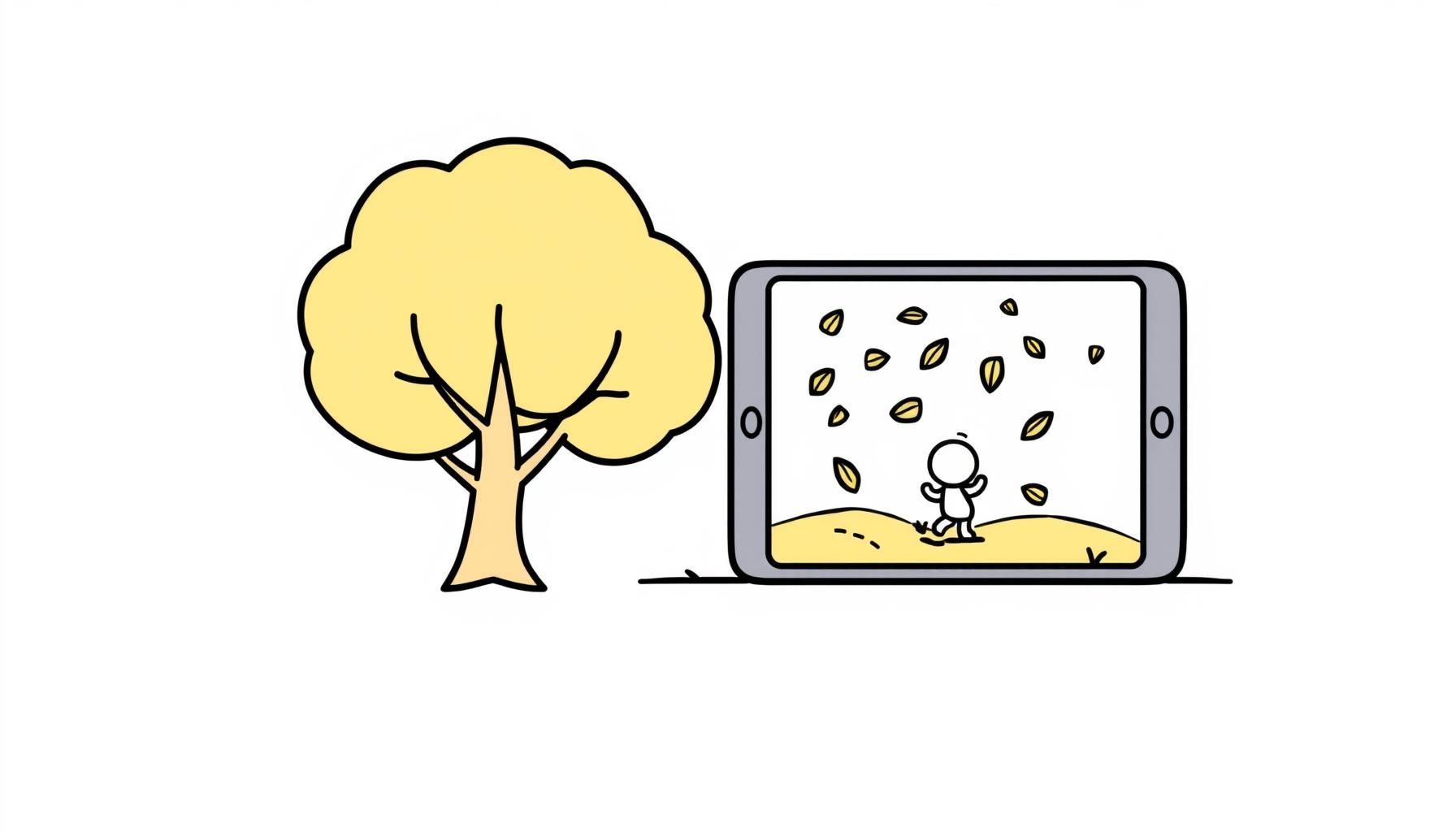
Kids exploring AI-powered educational tools in a classroom setting.
Remember when we used to say, ‘Back in my day, we had to memorize all those multiplication tables’? Well, times have changed, and so has the way our kids are learning! With AI stepping into the classroom, it’s like having a magical assistant that makes learning more interactive and personalized. So, let’s explore how this tech is reshaping education and how we can guide our kids through this exciting journey to become curious, resilient, and well-rounded individuals.
The Magic of AI in Learning

A child engaged with an AI educational app on a tablet.
You know how AI is turning learning into an adventure for our kids? It’s absolutely incredible! Imagine having a smart helper that adapts to your child’s pace and style, turning math problems into exciting quests or history lessons into interactive stories—just like a fun sidekick in their learning journey. AI can provide instant feedback, helping kids understand concepts better and faster. For example, if your child is struggling with multiplication, an AI tool can offer step-by-step guidance and even create games to make learning more enjoyable. This got me thinking—while AI can be a fantastic tool, it’s not a replacement for human interaction. It’s like having a really fun sidekick in learning—it makes things way easier, but it’s up to us to make sure our kids still enjoy the adventure of exploring and discovering on their own. How can we blend the best of both worlds to create a balanced learning experience for our children? Ever tried that?
Balancing Screen Time and Real-World Play

Children enjoying outdoor playtime at a local park.
One of the biggest challenges is finding the right balance between screen time and real-world play. We all know how important it is for kids to run around, build forts, and engage in imaginative play. These activities help them develop creativity, problem-solving skills, and social abilities. But with AI and digital tools becoming more prevalent in education, it’s easy for screen time to take over. So, how can we ensure our kids are getting the best of both worlds? Let’s start by setting clear boundaries. Just like we plan our family vacations with a mix of sightseeing and downtime, we can create a schedule that includes both screen-based learning and outdoor adventures. Encourage your child to take breaks, go outside, and engage in hands-on activities. Remember, the goal is to use AI as a tool to enhance learning, not to replace the joy of discovery and exploration. It’s tough to see our kids glued to screens, but with the right balance, we can ensure they still enjoy the simple joys of outdoor play and imaginative adventures. What are some fun ways you can blend tech and playtime to create a well-rounded learning experience for your child?
Building Resilience and Curiosity

A parent and child exploring nature together.
As parents, we want our kids to be resilient and curious. AI can be a great tool to foster these qualities. For instance, AI-powered educational games can encourage problem-solving and critical thinking. But it’s also important to teach our kids how to handle challenges and setbacks. When they encounter a difficult problem, instead of relying solely on AI for answers, encourage them to think creatively and persist. This is where our role as parents comes in. We can model resilience by showing them how we tackle challenges in our own lives. Share stories of times when you faced obstacles and how you overcame them. By doing so, we can help our kids develop the confidence and resilience they need to navigate the world, both online and off. Let’s also remember to nurture their curiosity. Ask open-ended questions, explore new hobbies together, and encourage them to ask ‘why’ and ‘how’. After all, curiosity is the spark that ignites a lifetime of learning. How can we use AI to inspire our kids to be more curious and resilient in their daily lives?
Preparing for the Future

A child using a computer to learn about AI.
The world is changing rapidly, and we want our kids to be ready for whatever comes their way. AI literacy is becoming an essential skill, and introducing our kids to these tools early on can give them a head start. But it’s not just about knowing how to use AI; it’s about understanding its limitations and ethical implications. Teach your child about the importance of privacy, critical thinking, and responsible technology use. Encourage them to ask questions like, ‘Is this information reliable?’ and ‘How can I use this tool ethically?’ By doing so, we can help them become not just tech-savvy, but also thoughtful and responsible digital citizens. Let’s also remember to foster a growth mindset. Encourage your child to see challenges as opportunities to learn and grow. Whether it’s through AI-powered learning tools or real-world experiences, every challenge is a chance to develop new skills and gain confidence. What are some ways we can prepare our kids for a future where AI plays a significant role in their lives and careers?
Source: Teens Are Flocking to AI Chatbots. Is this Healthy?, Scientific American, 2025-08-04
